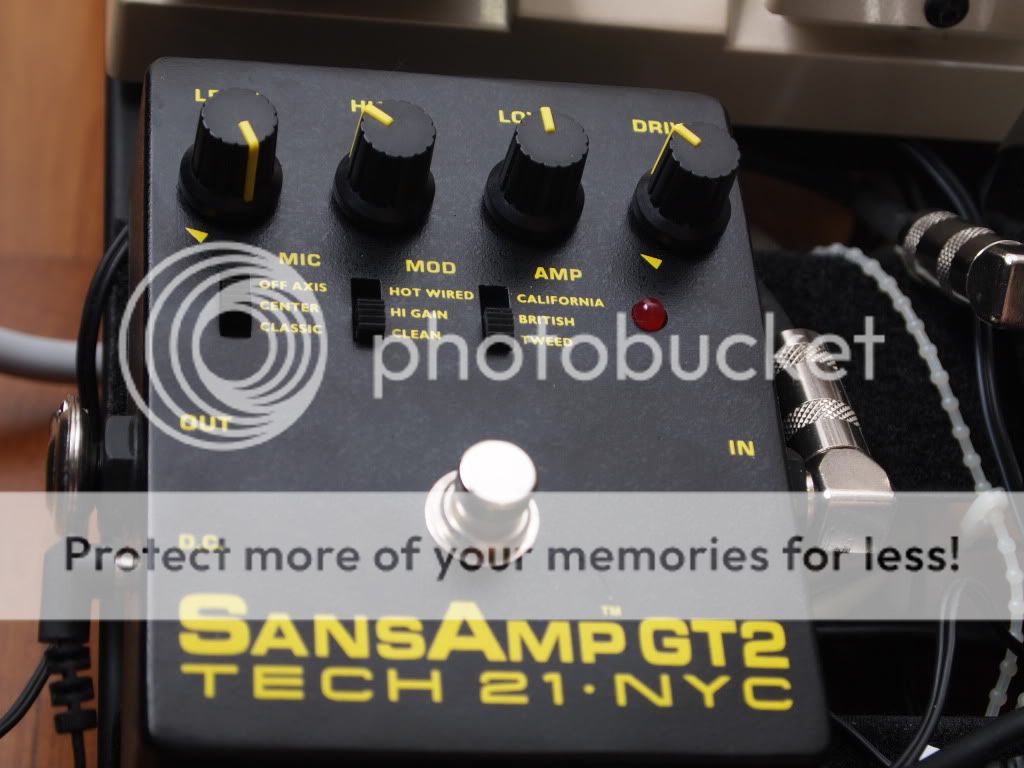Some of you know me as the advocate for cheaper alternatives to the big guitar brands (Fender, Gibson, etc). I own two Yamaha's that I've designated for outdoor use, or for places where I know that the crowd might be rowdy and there's a possibility of spilt drinks.
I recently went on a project to test my new SansAmp GT2. I've found a setting that's really good for live use (as heard in the Performing Arts rehearsal rooms, and in the halls of AMKMC), using the GT2 in a clean setting and relying primarily on my overdrives and boosters for dirt. I had wanted to use the same settings for the recording environment, which turned out to be a little more tricky.
I set the GT2 on zero drive and a mild high cut on the British amp on clean with the mic off axis. All overdrive settings were the same throughout. I recorded three snippets with three different guitars, in increasing order of value. Here are the results of the recording project:
First up, the Yamaha RGX-820, the cheapest of the three.
Single note lines towards the end of the video were clear and defined, but chord work in front was muddy and too edgy. I suppose this would work for Japanese pop rock songs (don't you wish they turned the treble/presence down for some of the guitar parts?), or for the situation where I drastically need to cut through a muddy mix.
I then tried the Yamaha AES-820, slightly more expensive than my RGX.
I set this guitar up with the pickups on high-cut mode. Several things were improved over the RGX: there was more definition, and the tone was more full-bodied. With both Yamahas, I had to post-process to get the tone to sit right in the mix, with massive EQ-ing, parallel compression, a tube-warmth plugin, and a stereo enhancer.
Now, without changing any dials on the GT2, the tone of my Les Paul sounded like this with the bridge pickup volume on 6, tone at 8:
Definition, articulation, warmth, clarity...the Les Paul surpassed the Yamahas by a mile. I didn't have to do any drastic post-processing to get the tone to sound nice, apart from some stereo enhancement. The guitar tone seems to wrap itself around the notes, something I've realized is a quality that is present in my Strat and Tele.
Seriously. If you can save up and get a guitar of good build, it is worth every dollar.









1 comments:
I totally agree with this post....in fact if you wanna nitpick even more, I'd say that there's a slight, if not marked difference between American and Japanese made stuff too. I discovered this during my time working at Swee Lee, and I sometimes take the effort to show my regular customers who have an ear for tone the differences - you can even hear it acoustically sometimes without plugging in if you listen hard enough. Currently all my guitars, including acoustics are made in the USA. I ended up selling off all my prestige MIJ ibanezes as I couldn't quite bond with them.
Ok, i know this is suspicious starting to corral into some serious cock-sniffery here, so I shall stop. Anyway, great tone and playing! Love the JB studio...sounds really warm, articulate and thick.
Regards,
Darrell
Post a Comment